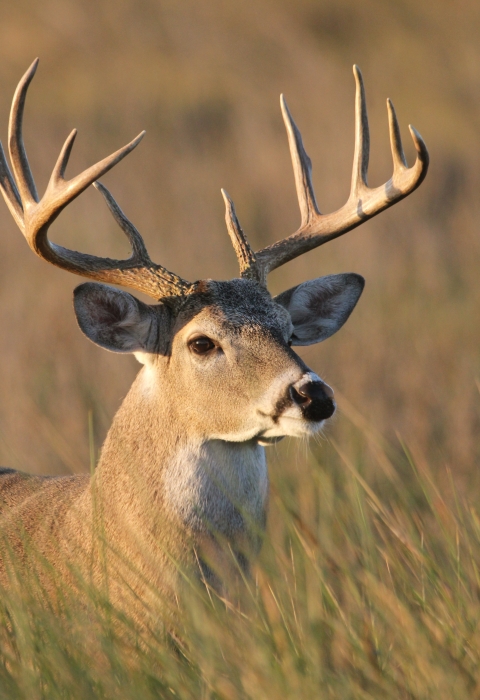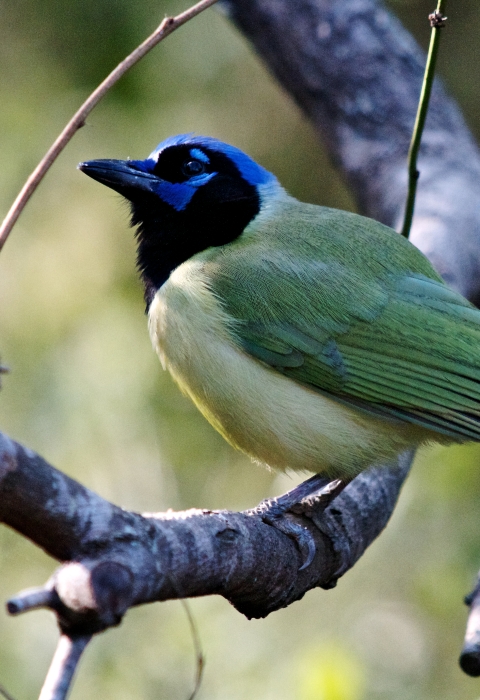Seasons of Wildlife
Fall
There is no shortage of wildlife to be seen at Laguna Atascosa. The refuge is located on the southern end of the Central Flyway, the refuge is a major stopover point during the migration for wintering waterfowl such as the Redhead duck, Blue-winged Teal, Northern Shoveler, and much more. With Laguna Atascosa’s rich green vegetation and plentiful water source, some ducks even nest here, such as Fulvous Whistling-Duck, Red-breasted Merganser, and the Mottled Duck.
Spring
Warblers are abundant with more than 35 species seen, including golden-winged warbler, magnolia warbler, northern and tropical parula, American redstart, palm warbler and yellow-breasted chat. The refuge is also a vital stopover for Neotropical songbirds that are migrating. Painted buntings, Bullock’s oriole and hummingbirds can be seen though out the refuge in amazing numbers.
Summer
There is nothing tougher than our native species that take the constant South Texas heat. Summer can be brutal on our local native species, which is why many of them call Laguna Atascosa home. With our 3,500 acre freshwater lake, these creatures stay hydrated all summer long. Our local species include white-tailed deer, coyote, bobcat, collared peccary (javelina), eastern cottontail rabbits, grey fox, long-tailed weasel, the endangered ocelot, Texas tortoise, six-lined racerunner lizard, bullsnake, and red-eared slider turtles.
Winter
During the winter, many of the birds are still migrating South during a late migration, an occasional cold front moves in and causes the birds to “fallout.” In need of shelter from strong winds and cold weather, the birds fallout on the refuge until they can regain their strength and continue their long journey.
Featured Species
Laguna Atascosa is host or home to an incredible diversity of migrating birds that funnel through the tip of Texas in an effort to avoid flying too far east, over the Gulf Coast, or too far west, over the desert. In addition, many southern species of wildlife reach their northernmost range along the Rio Grande. Located on the southern end of the Central Flyway, the refuge is a major stopover point on the lower Texas coast for waterfowl going to and from Mexico. In November alone, when peak use occurs, more than 250,000 ducks depend on the refuge with thousands more adjacent on the Laguna Madre. It is estimated that 80% of the North American population of Redhead ducks winter in this area.
The refuge is also a vital stopover for neotropical songbirds that are migrating. Painted buntings, Bullock’s oriole and various warbler and hummingbird species all depend on the Laguna Atascosa Refuge during their migration. Often, when many of the songbirds are migrating north, an occasional cold front moves in and causes the birds to “fallout.” In need of shelter from strong winds and cold weather, the birds fallout on the refuge until they can regain their strength and continue their long journey. In addition to songbirds, the refuge is also well known for its impressive raptors. Padre Island is well-known for hosting large concentrations of migrating peregrine falcons in the spring and fall and is an internationally important staging area for these falcons. The Aplomado falcon, once extirpated from the United States, is making a comeback and can be seen hunting the refuge’s grasslands.
In addition to the incredible bird diversity, there are 45 resident mammal species that can be found on the refuge, including white-tailed deer, coyote, bobcat, collared peccary (javelina), and eastern cottontail rabbits. Here but not seen quite as easily are grey fox, long-tailed weasel, Mexican free tail bats and the endangered ocelot. Ocelots are a small, wild cat that once roamed in the United States from South Texas up into Arkansas and Louisiana and today is found only in deep South Texas. The refuge is home to one of the two remaining breeding populations of ocelots, a management priority for the U.S. Fish and Wildlife Service.
The refuge is also a favorite among butterfly and dragonfly enthusiasts who enjoy catching a glimpse of a blue metalmark, a species that, in the United States, is only found in South Texas. In addition, at least 44 species of reptiles and amphibians are known to inhabit Laguna Atascosa Refuge. Typical species that may be seen include Texas tortoise, six-lined racerunner lizard, bull-snake, and red-eared slider turtles. Rarer species include Texas indigo snake, Texas horned lizard, black-spotted newt and Kemp’s Ridley sea turtles. The most endangered of the sea turtles, Kemp’s come ashore during the summer to lay their eggs in the warm South Padre Island sands.

